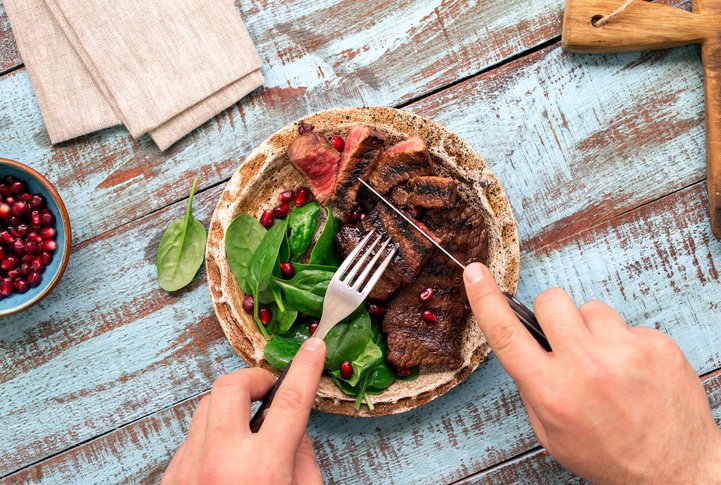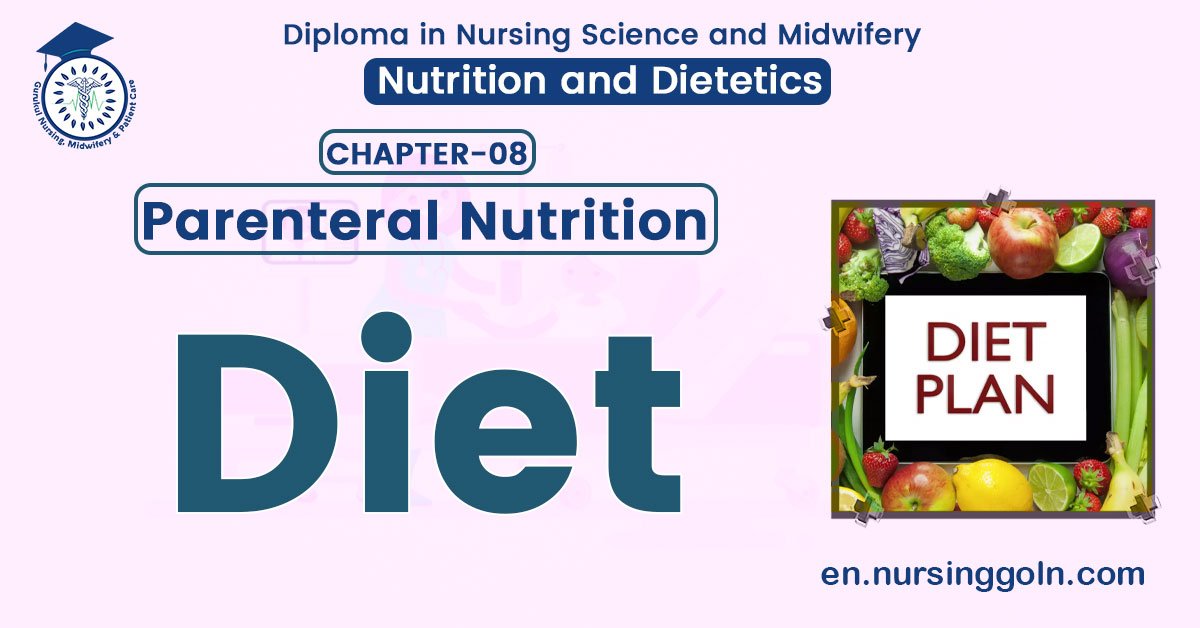Definition of Diet – This book covers the entire syllabus of “Nutrition and Dietetics” prescribed by BNMC-for all Diploma in Nursing Science and Midwifery students. We tried to accommodate latest information and topics. This book is examination friendly setup according to the teachers’ lectures and examination’s questions.
At the end of the book previous university questions are given. We hope in touch with the book students’ knowledge will be upgraded and flourished. The unique way of presentation may make your reading of the book a pleasurable experience.

Definition of Diet
In nutrition, diet is the sum of food consumed by a person or other organism. The word diet often implies the use of specific intake of nutrition for health or weight-management reasons (with the two often being related).
Or,
Diet is the sum of food consumed by a person or other organism.
Purposes of Normal Diet:
- To maintain adequate nutrition of the individual.
- To promote optimal nutrition.
- To restore the individual to a satisfactory nutritional status, if his nutritional balance has been disturbed.
(Ref by-Annamma Jacob/2nd/172)
Types of Diet:
| A. Normal food: |
|
| B. High diet: |
|
| C. Soft diet: |
|
| D. Liquid diet: |
|
| E. Therapeutic diet: |
|
What kinds of diet will you provide for a heart disease patient
| 1. Diet for peptic ulcer patient: | Peptic ulcer diet: Characteristics of peptic ulcer diet:
|
| 2. Diet for liver disease patient: | a) Diets in liver disease: (With jaundice):
b) Diets in liver disease: (Without jaundice):
|
| 3. Diet in gallbladder disease: |
|
| 4. Diet for constipating patient: |
|
| 5. Diet in diarrhoea and dysentery: |
|
| 6. Diet in kidney disease: | a) Acute glomerulonephritis.
b) Nephrotic syndrome.
c) Acute renal failure.
d) Chronic renal failure.
|
| 7. Diet for diabetes patient: | a) Diet in diabetes mellitus:
b) Diet/ food to be avoided:
|
| 8. Diet in ischaemic heart disease |
|
| 9. Diet for hypertension Patient: | Diet in hypertension:
|
| 10. Diet for congestive heart failure patient: | Diet in CHF:
|
| 11. Diet for anaemic patient: | The diet should contain more of iron, calcium and protein for synthesis of haemoglobin in blood. The diet for anaemia patient should contain-
|
(Ref by-LC Gupta/3/232-7)

Special Considerations of Serving a Normal Diet
- Note any food preferences, allergies or restrictions of diet.
- Note the diet the patient is on and indicate any special preparation or utensils the patient needs while eating.
- Note any eating difficulties or how well the patient tolerated the meal.
- Check for medications to be administered before, after and along with the meal, e.g. insulin.
(Ref by-Annamma Jacob/2nd/173)
Some Dietary Problems during Sickness:
- During sickness, there will be disturbance of gastro intestinal function.
- Anorexia (loss of appetite).
- Dyspepsia.
- Defective digestion and absorption.
- Lack of exercise decreases need for energy.
- Tissue building foods are needed more.
- The process of anabolism and catabolism are not normal in sickness.
- In some kinds of illness, protein requirements are more while in some others, both protein
- and carbohydrates are needed in larger amounts.
- Vomiting and diarrhea are problems in which intravenous fluid administration is required.

Factors Influence Food Habits of a Person:
| A. Physical: |
|
| B. Psychological; |
|
| C. Sociocultural: |
|
| D. Environmental: |
|
| E. Economic: |
|
(Ref by- SN. Nanjunde Gowda/2/430)

Procedure of Feeding a Helpless Patient:
A. Articles:
- Tray containing prepared diet.
- Face towel and water.
- Kidney tray.
- Backrest and cardiac table.
- Fork and spoon.
- Feeding cup with water.
B. Procedure:
- Explain procedure to the patient and assess how he can participate.
- Position the patient comfortably, preferably in Fowler’s position.
- Assist the patient to wash his hands and face.
- Place towel over chest and around the neck.
- Make sure that therapeutic restrictions are considered. Check the diet and ensure that is the one was ordered.
- Create a pleasant environment.
- Wash hands.
- Sit or stand at the side of patient.
- Consider the patient’ preferences while feeding and encourage his participation to the extent possible.
- Feed the patient in small spoonful’s waiting for him to chew and swallow one mouthful before next.
- Encourage the patient to take all the food several to him, but not force,
- Give water in between if patient prefers water.
- When the patient has eaten food and he feels satisfied, stop feeding and give him a glass of water if he prefers.
- Provide articles for rinsing mouth and encourage patient to do so.
- Dry lips and face with towel.
- Replace articles and wash hands.
- Record in nurse’s record the type of diet, time of feeding, amount taken and tolerance.
- Record fluid taken, in intake output record.
(Ref by-Annamma Jacob/2nd/173)
Read more:
